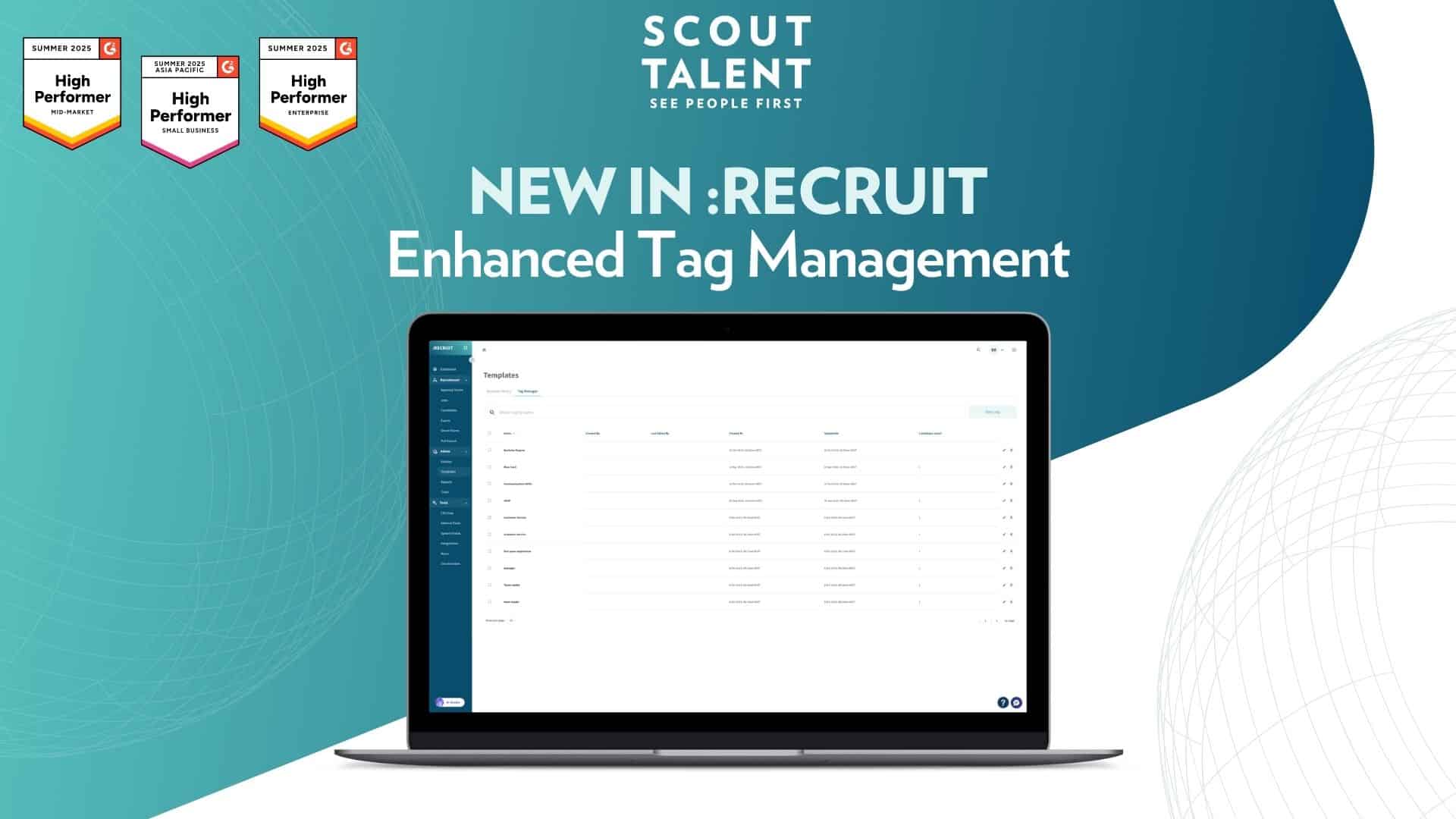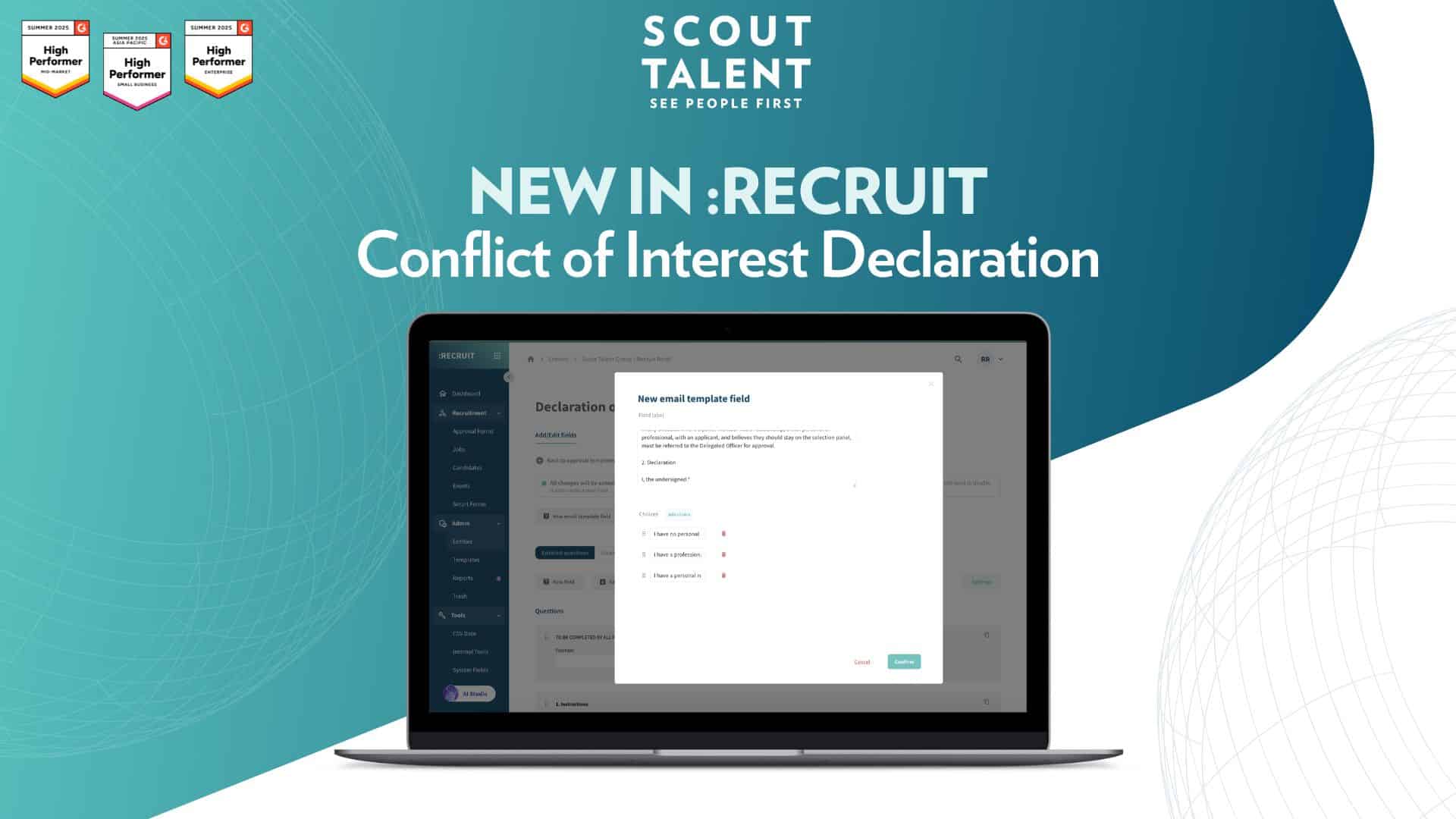HR professionals work across multiple systems every day to stay on top of large amounts of candidate and employee data, communicate across the business and carry out virtually every other task. A well-integrated HR system amplifies the power of existing systems, enabling users to streamline their tasks, reduce double-handling, and become more efficient.
Not only does the integration of HR systems save HR professionals time by avoiding the process of re-entering information that already exists in another system, but it also gives them more visibility and control over their data.
Integrating Scout Talent recruitment software with other HR systems (e.g. onboarding, payroll) opens up a host of possibilities as to how candidate information can be re-purposed both throughout the recruitment process and for post-hire activities.
According to Daniel Beach, Technical Lead at Scout Talent and Matthew Barram, Senior Technical Analyst at NetEngine, there are three main considerations when it comes to integrating your Applicant Tracking System with other HR technology:
Start with the end-result in mind
The most important thing by a long shot is to be clear about what you want to achieve through the integration. Daniel emphasises, “It’s important to quantify your goals and to communicate this to the technical team who will be performing the integration. If, for example, the aim of integrating your candidate management software with your onboarding system is to accelerate the onboarding process, inform the development team of this metric so they can be best positioned to help you achieve this goal.”
Matthew notes that a measurable target enables you to track the effectiveness of integration against the metric at hand. “Reporting on improved productivity, which is a result of upgrading HR technology, is always key to demonstrating the value of investing in HR technology to business leaders, and thus, securing funding for additional system features later on,” he notes.
Consider the user experience
Although integration can be incredibly mechanical, it can also be very visual. The key, Matthew says, is to be as clear as possible about how you would like the integration to look and feel. “Would you want users to be aware when they move across platforms, or would you prefer a subtle integration that does not require visual cues?” Daniel agrees. “Some of our clients like to provide us with a rough drawing of what they imagine the integration would look like. This might be as simple as a button and a notification to inform the user that they are now exporting to an integrated platform,” he says.
Consider the ROI
Sometimes integration might not be the best method to achieve your desired outcome. Matthew notes that in cases where little useful data is available or you rarely need the information, it would be quicker to obtain the data manually or with a simple CSV export when required. “If integration would only delay your implementation of the recruitment software, or if it’s simply quicker to do the task manually, then you may need to consider whether integration is a viable option for you. Remember, you can always integrate your systems at a later time should your circumstances change.”
At Scout Talent we know the value of purposeful integrations and can customise our recruitment software to integrate with many systems to ensure that you and your candidates enjoy a smooth and consistent user experience.
Editor’s Note: To learn how we can integrate Scout Talent Recruitment Software with your other HR systems, get in touch with us today.



